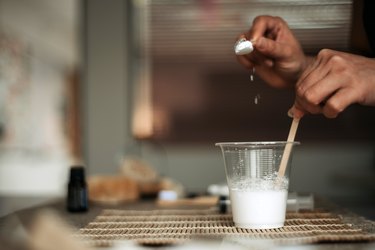
Getting stung by a bee can be a pretty scary experience, but don't fear. Unless you have an allergy to bee stings, you'll probably just experience some mild swelling and itching in the area, most of which can be treated with items you probably already have at home.
But first things first:
Video of the Day
Video of the Day
How to Remove the Bee Stinger
The first thing you need to do to treat a bee sting is to make sure the stinger is removed.
“You can use a credit card or the blunt edge of a knife to scrape out the stinger,” says Pierrette Mimi Poinsett, MD, a pediatrician and consultant for Mom Loves Best. “The stinger will look like a black dot in the middle of the sting. It is important to remove the stinger as soon as possible, as the stinger can still deliver venom for several minutes after the sting.”
Afterward, make sure to wash the area well with soap and water.
Once you've done that, the swelling and pain may go away within a few hours, per the Mayo Clinic, even if you've left the sting untreated. Sometimes, though, the symptoms can last for a week, or even up to 10 days.
If that's the case, you can try some of these natural remedies for bee stings to ease your symptoms. It should be noted that many of these remedies don't have strong clinical trials to back them up, but they are recommended by doctors and many people swear by them.
Warning
If you have any of the following symptoms of an allergic reaction after a bee sting, get medical help right away:
- Difficulty breathing
- Throat or tongue swelling
- A weak, fast pulse
- Nausea, diarrhea or vomiting
- Feeling dizzy or fainting
- Loss of consciousness
- Hives
- Flushed or pale skin

1. Baking Soda and Water
The National Capital Poison Center also recommends applying a paste made out of baking soda to the affected area to treat bee stings.
Indeed, a poultice of baking soda and water may help "draw out venom, calm inflammation and ease pain," Tricia Pingel, NMD, an Arizona-based naturopathic physician, tells LIVESTRONG.com. "I like this [remedy] particularly because you almost always have these items in your kitchen."
How to Use Baking Soda and Water for Bee Stings
- Start with about a tablespoon of baking soda and slowly add cool water until the mixture forms a thick paste.
- Apply a thick layer of the paste to the sting site and let it sit for several minutes before rinsing it off.
- Reapply the paste as needed to help with pain and swelling.
2. Ice or a Cold Compress
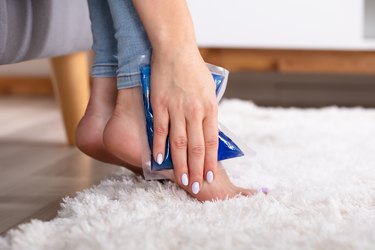
Dr. Poinsett recommends applying ice or a cold compress to the area to help reduce pain and swelling. This is an especially good option if you have, say, a fat lip due to a sting, and you don't want to risk getting baking soda or another kind of paste in your mouth.
The American Academy of Dermatology similarly recommends applying a cold pack to the affected area to reduce swelling. However, they caution that "if the swelling moves to other parts of your body, such as your face or neck, go to the emergency room immediately, as you might be having an allergic reaction."
How to Use Ice or a Cold Compress for Bee Stings
- Keep a cloth between the ice or compress and your skin to avoid freezing the skin.
- Apply the ice for about 20 minutes at a time.
- Reapply it once every hour as needed to ease symptoms.
Related Reading
3. Meat Tenderizer
"An enzyme in meat tenderizer called papain is believed to break down the protein that causes the pain and itching," says Seema Bonney, MD, the founder and medical director of the Anti-Aging & Longevity Center of Philadelphia.
How to Use Meat Tenderizer for Bee Stings
Dr. Bonney recommends making a solution of one part meat tenderizer and four parts water, and applying it to the bite for 30 minutes.
If you don't have meat tenderizer already, you can buy it online or at your local supermarket ($7.88, Amazon.com).
4. Aloe Vera Gel
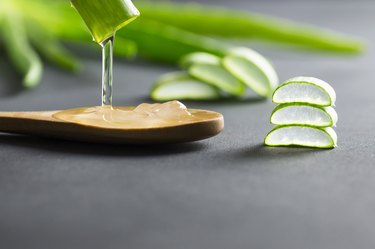
"Aloe vera has long been known to help promote faster healing of minor cuts and scrapes by helping to retain skin moisture," Dr. Pingel says.
A January 2019 review in the Iranian Journal of Medical Sciences found that aloe vera was effective in treating many types of skin rashes and wounds, including psoriasis, so it should certainly help with itching.
How to Use Aloe Vera Gel for Bee Stings
Simple, Dr. Pingel says: Spread a little bit of the gel on the affected area, and reapply as needed to ease swelling and itching.
5. Apple Cider Vinegar
"I've found that apple cider vinegar can help to relieve itching," Dr. Pingel says.
Dr. Bonney agrees that apple cider vinegar "helps to neutralize bee venom."
How to Use Apple Cider Vinegar for Bee Stings
Dr. Pinel suggests mixing ACV 50/50 with water, soaking a cloth in the solution and then applying it to the affected area for several minutes or until symptoms start to ease up.
Dr. Bonney, on the other hand, recommends soaking the sting in a basin of ACV for at least 15 minutes.
6. Toothpaste
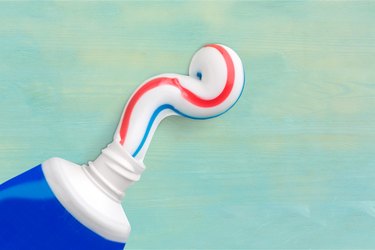
While there isn't a lot of research to support this, some people believe that dabbing a little bit of toothpaste on the affected area is an effective honey bee bite treatment.
"The alkaline in toothpaste may help to neutralize venom," Dr. Bonney explains. The good news is you've definitely got this lying around, so it's worth a try.
How to Use Toothpaste for Bee Stings
Spread a layer of the minty stuff on the bite and leave it there until the pain and swelling start to subside. Reapply as needed.
7. Manuka Honey
"Manuka honey contains antimicrobial, anti-inflammatory and wound-healing properties, making it a great natural remedy to have on hand for a variety of situations and ailments," Dr. Pingel says. "It's also known to help relieve itchy skin, which makes it great for stings."
In fact, a June 2017 study in The Journal of Immunity, Inflammation, and Disease showed hat Manuka honey significantly improved symptoms in people with eczema when applied topically each night for a week.
And an August 2013 review in the Jundishapur Journal of Natural Pharmaceutical Products confirmed that using Manuka honey rapidly improves the healing of mild wounds and burns.
How to Use Manuka Honey for Bee Stings
Just apply a small amount of honey to the affected area. As a bonus, the stickiness might dissuade you from itching, which always makes things worse, Dr. Pingel says.
8. Apis Mellifica
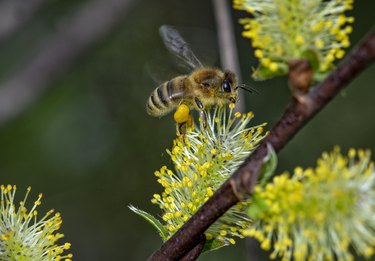
Apis Mellifica, otherwise known as Apis, is a type of medication made when a honeybee is crushed, added to alcohol and then diluted so that the venom is removed and only the curative agent remains. While you can't exactly make this at home, it is a natural remedy (and you can buy it at Walmart for only $6.99).
"Apis mellifica is a homeopathic remedy made from honeybees," Dr. Pingel says. "If you have a stinging, red, swelling area, odds are that Apis mellifica will help. In fact, it's been used by doctors throughout Europe for this and other purposes for a very long time."
How to Use Apis Mellifica for Bee Stings
Always follow the directions on the packaging, and ask your doctor or pharmacist if you have any questions or concerns.
9. Certain Herbs
There are a variety of herbs known for their soothing effects that you can use as a poultice. Some of Dr. Pingel's favorites are plantain leaves, calendula flowers, lemon balm and arrowroot.
How to Use Herbs for Bee Stings
She recommends wetting the herb, preferably with apple cider vinegar, and then applying it over the area. Then top the herb with a gauze or a light towel for about 30 minutes.
Tip
If finding the herbs sounds like too much work, you should know that arrowroot can be found as a powder, and the others are available as oils. You can find them in local supermarkets or health food stores, or online.
10. Over-the-Counter Medication
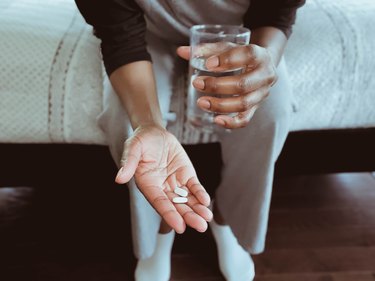
While it's not exactly a home remedy, it can be good to keep OTC meds as an option if everything else fails.
"Over-the-counter medication can also be used to treat a bee sting," Dr. Poinsett says. "Ibuprofen (Motrin, Advil) can reduce inflammation, diphenhydramine (Benadryl) can reduce swelling and hives and hydrocortisone 1% cream can be applied to the sting to reduce swelling and itch."
The Mayo Clinic similarly recommends applying hydrocortisone cream or calamine lotion to ease the redness, itching or swelling of a bee sting, as well as taking an oral antihistamine that contains diphenhydramine (Benadryl) or chlorpheniramine if the symptoms start to really bother you.
How to Use OTC Meds for Bee Stings
Always follow the directions on the packaging, and ask your pharmacist if you have any questions or concerns. Also, always ask your child's pediatrician before giving them any over-the-counter medications.
- The Journal of Immunity, Inflammation, and Disease: "Honey is potentially effective in the treatment of atopic dermatitis: Clinical and mechanistic studies"
- Jundishapur Journal of Natural Pharmaceutical Products: "Evidence for Clinical Use of Honey in Wound Healing as an Anti-bacterial, Anti-inflammatory Anti-oxidant and Anti-viral Agent: A Review"
- Iranian Journal of Medical Sciences: "The Effect of Aloe Vera Clinical Trials on Prevention and Healing of Skin Wound: A Systematic Review."
- National Capital Poison Center: "Bee Stings: Is It an Allergic Reaction?"
- American Academy of Dermatology: "How to Treat a Bee Sting"
- Mayo Clinic: "Bee Sting"
Is this an emergency? If you are experiencing serious medical symptoms, please see the National Library of Medicine’s list of signs you need emergency medical attention or call 911.